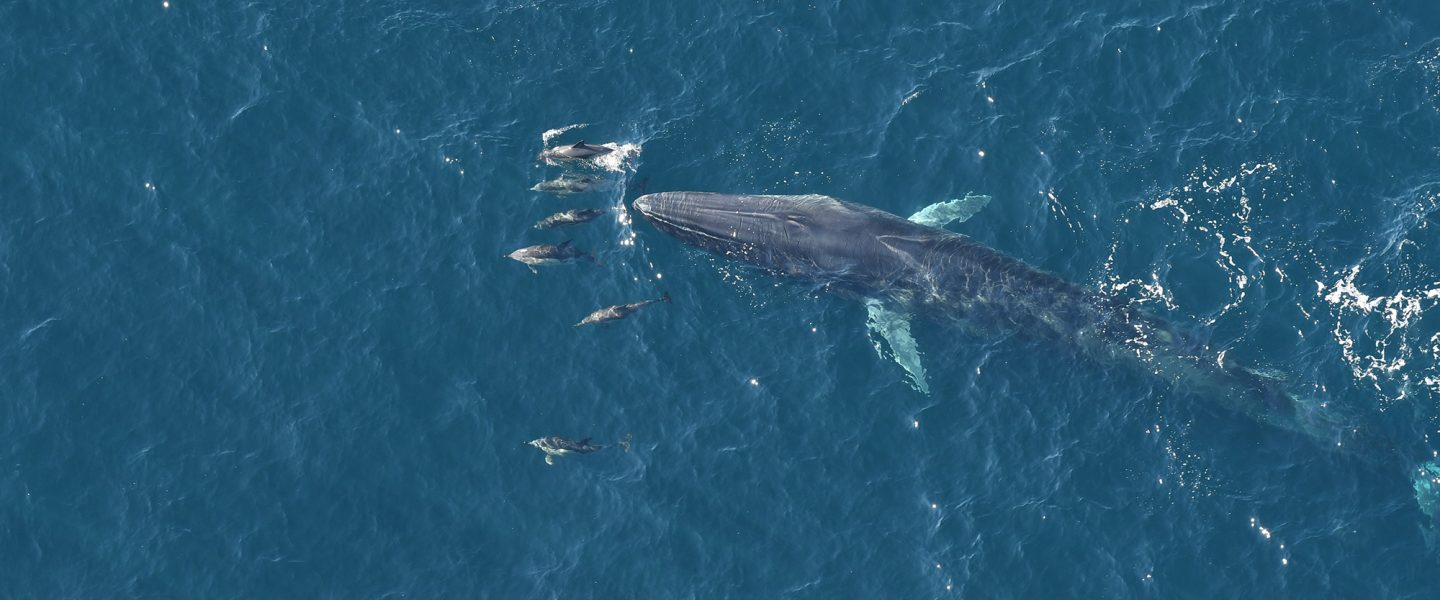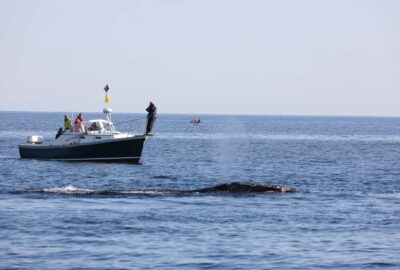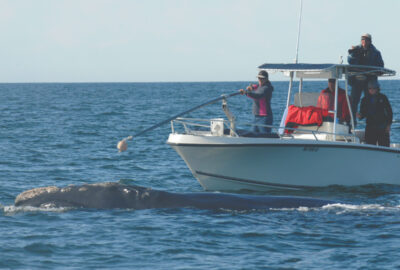Examining Biodiversity in Marine Areas
By New England Aquarium on Monday, March 07, 2022


Associate Scientist at the Anderson Cabot Center for Ocean Life at the New England Aquarium, Brooke Hodge’s new study analyzed sightings of more than one million marine mammals to better understand their habitat use along the east coast of the United States. This work contributes to habitat conservation efforts to designate marine protected areas (MPAs) by identifying regions with many marine mammal species, or high diversity. The study also examined the environmental reasons that some areas have higher diversity than others. According to the authors, “Designating MPAs and establishing effective management measures to meet the goal of protecting areas of particular importance to biodiversity are needed to protect marine mammals and the ecosystems on which they depend.” The Biden-Harris Administration’s aim to protect 30 percent of federal U.S. lands and waters by 2030.
The team found diversity was highest in the northern and mid-Atlantic regions with steep continental shelf edges. Canyons and areas of high salinity and low temperatures also had high marine mammal diversity. Hodge and the team also discovered that the Northeast Canyons and Seamounts Marine National Monument, an MPA, protects a diverse and unique marine mammal community.
After years of research, in 2016, scientists from Mystic Aquarium, University of Connecticut Groton, and New England Aquarium provided crucial evidence about the marine national monument’s rich biodiversity, leading President Obama to designate it a national marine protected area.
The study, published in Conservation Science and Practice, used North Atlantic Right Whale Consortium data from aerial and boat surveys from by 49 organizations between 1979 and 2020 to calculate marine mammal species diversity in the North Atlantic Ocean between Florida and Nova Scotia, Canada. The data set contained 189,175 sightings of more than 1 million animals from 30 unique species or species groupings.
The study’s co-authors include several New England Aquarium scientists: Daniel E. Pendleton, research scientist; Laura C. Ganley, postdoctoral associate research scientist; Orfhlaith “Orla” O’Brien, associate scientist; Scott D. Kraus, emeritus scientist; and Jessica V. Redfern, senior scientist and chair of the Spatial Ecology, Mapping, and Assessment Program. Ester Quintana-Rizzo of Simmons University also contributed to the research.





